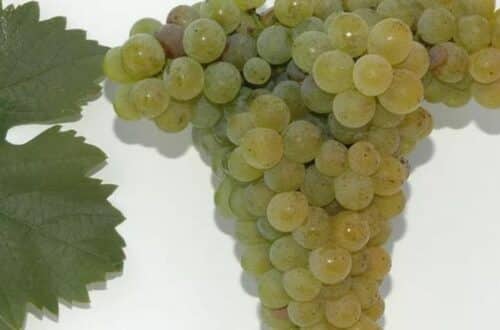Austria
This category is your gateway to exploring Austria’s unique and often underappreciated wine regions.
Discover:
- A Quick Guide to Austria’s Top Wine Regions
- The famous Wachau wine
- The less famous but equally delicious red wines of Burgenland
- Your Beginner's Guide to Grüner Veltliner from Wachau
- Your Beginner's Guide to Blaufränkisch from Burgenland
- Where to buy Austrian wine online
And so much more… Prost!
-
Which is better Blaufränkisch or Zweigelt?
Austria allows the use of 26 white grape varieties and 14 red grape varieties for the production of Qualitätswein, Prädikatswein, and Landwein. Over the past 20 years, the proportion of red wines has doubled and now accounts for about one-third of Austria’s nearly 46,500 hectares of vineyard area. In addition to internationally renowned grape varieties like Riesling, Pinot Blanc, Chardonnay,…
-
What does St Laurent wine taste like?
Austria permits 26 types of white grapes and 14 types of red grapes for the production of Qualitätswein, Prädikatswein, and Landwein. In the last two decades, the proportion of red wines has doubled and currently represents a third of Austria’s almost 46,500 hectares vineyard area. Not only has Austria globally renowned grape varieties like Riesling, Pinot Blanc, Chardonnay, Muscat Blanc…
-
What to eat with a Saint-Laurent wine?
Austrian cuisine, aka “Viennese” cuisine, is like a delicious melting pot reflecting the diverse cultural influences that have flavored the Austro-Hungarian Empire over the centuries. This hearty and flavorful cuisine is rooted in Nordic heritage and is as distinctive as its wines, thanks to the local terroir. The Austrian kitchen features a vast array of ingredients like Schwammerl (wild mushrooms),…
-
Grauburgunder vs Weissburgunder
Grauburgunder translates as Pinot Gris and Weissburgunder as Pinot Blanc. These are two different grape varieties. As we will see, they have different flavor profiles and it’s best to know how each one tastes in order to choose your wines accordingly to your taste. These flavor profiles impacts food pairing of course. Last, understanding these differences will provide insight into…
-
Blauburgunder vs Pinot Noir
The tradition of Pinot Noir in Austria has been long-standing since the 14th century when Cistercian monks brought the vines to Mönchhof. However, the warmer climate in zones like Gols means that the vines require protection from excessive sun exposure or deleafing. While Austria’s Pinot Noir may differ from Burgundy‘s due to the unique growing conditions, the long tradition and…
-
How long can you keep Zweigelt wine?
Zweigelt is a new variety selected in 1922 by Dr. Fritz Zweigelt, LFZ Klosterneuburg, from St. Laurent and Blaufränkisch. Its dissemination is due to the fact that Lenz Moser planted the variety in high culture on a large scale and recommended it to other winegrowers. Towards the end of the last century, when areas cultivated for red wines were extended,…
-
What is Rotgipfler?
Austria boasts an impressive selection of wines made from globally celebrated grape varieties like Riesling, Pinot Blanc, Chardonnay, Muscat Blanc à Petits Grains, Traminer, Pinot Noir, Merlot, Cabernet Sauvignon, and Syrah. However, the assortment of indigenous grape varieties is even more noteworthy. The term “indigenous” refers to grape varieties that have originated almost exclusively in a particular region through natural…
-
Is Blaufränkisch sweet?
Blaufränkisch was first documented in the 18th century in Austria, while in Germany it appeared later under the names Lemberger or Limberger, deriving from the town of Limberg (now Maissau) in northern Austria. In Hungary, it goes by the name Kékfrankos. This ancient indigenous grape variety is a result of crossing Blaue Zimmerttraube and Weisser Heunisch. Blaufränkisch has been used…
-
Is Grauburgunder the same as Chardonnay?
While Austria does have an impressive selection of globally celebrated grape varieties like Riesling, Pinot Blanc, Chardonnay, Muscat Blanc à Petits Grains, Traminer, Pinot Noir, Merlot, Cabernet Sauvignon, and Syrah, it is the range of indigenous grape varieties that is particularly noteworthy. These “indigenous” grapes have originated almost exclusively in a particular region through natural crossbreeding or mutations and have…
-
What are the red wines of Burgenland?
In the east of Austria lies Burgenland. The name means “land of castles” in German and it comes from the fact that the region was once home to many castles and fortresses. It was part of the Kingdom of Hungary until the end of WWI, when it became part of Austria following the collapse of the Austro-Hungarian Empire. This meant…











